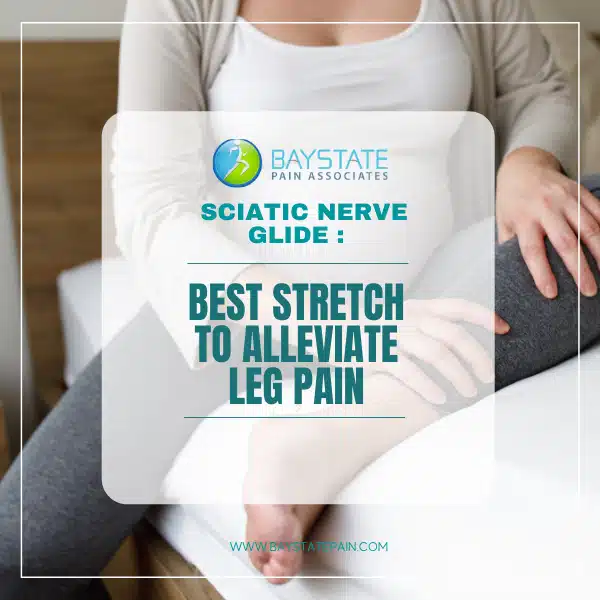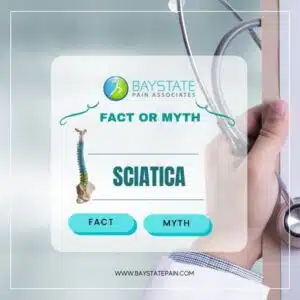Sciatic nerve glide : Best Stretch to Alleviate Leg Pain
Do you suffer from chronic leg and hip pain that simply won’t go away?
If so, there’s a good chance that you have sciatica, or pain that’s caused by pressure placed on the sciatic nerve.

About 90 percent of sciatica cases are the result of a herniated disc in your lumbar spine. The disc bulges out and puts pressure on the sciatic nerve, which can cause pain, numbness or a burning sensation. The exact location of the pain depends on the location of the herniated disc.
How it helps:
Sciatic nerve flossing can help relieve lower back pain by massaging the trapped nerve. Sciatic nerve flossing is done to “massage” the sciatic nerve when it becomes compressed by the muscles.
The Sciatic Nerve Glide
By extending your neck and straightening your leg and subsequently flexing your neck and bending your leg, you essentially floss your nerve back and forth in your body to help it function better within the surrounding structures.
Perform this exercise daily—or even multiple times per day—to help relieve sciatic nerve pain. However, Stevens cautions that this exercise may actually make the pain worse for some people. If that’s the case, immediately stop performing the exercise.
Caution: This Flossing technique can cause more pain in some people, so be sure to stop if you feel any increased pain and try some of the other exercises below.
Sciatica Facts:
- The sciatic nerve starts in the lower back and runs down the back of each leg.
- The sciatic nerve is the largest nerve in the body, up to almost 2cm in diameter.
Sciatic pain is often associated with tingling, numbness, or weakness of the leg. - Each person has 2 sciatic nerves components, namely: the tibia and the common peroneal components derived from the of L4 to S3 spinal nerves.
It may be sudden in onset and can persist for days or weeks. - Sciatica can be caused by a number of conditions that lead to compression or irritation of nerves as they exit the spinal canal (space through which the spinal cord travels).
- People who get sciatica are usually between the ages of 45 and 64 years.
Approximately 80% to 90% of people with sciatica recover over time without any surgical intervention. - The prevalence of sciatica varies widely among studies, with lifetime incidence estimated between 10% to 40%. Most instances occur in the fourth and fifth decades of life.
- Usually Sciatica is a symptom of another medical condition that pinches or puts pressure on the sciatic nerve.
Main Causes of sciatica:
- Age-related changes in the spinal disks which compress on the nerves (degenerative disk disease).
- A bulging disc or herniated disc that pinches on the sciatic nerve.
- Piriformis syndrome which is pain disorder that affects a muscle in the buttock.
- Spinal Stenosis which can compress on the nerves.
- Extra bone growth (bone spur/osteophyte) near the sciatic nerve.
- Spondylolithesis or misalignment of one vertebrae over another.
- Lumbar or pelvic muscle inflammation or spasm can impinge a lumbar or sacral nerve resulting in sciatic symptoms.
- Malignancy, infection, and gynaecological conditions (i.e. uterine fibroids, endometriosis, etc.).
Sciatica Symptoms Include:
- Lower back pain.
- Unilateral (on one side) leg pain that is worse than regular back pain.
- Pain that commonly radiates from the buttocks down the back of the leg to below the knee.
- Numbness, burning, and/or tingling of the lower leg.
- Pain that radiates to the foot and/or toes.
- Burning sensation deep in the buttocks.
- Leg weakness (rare)
Note: Sciatica symptoms may be worsened with flexion of the lumbar spine, twisting, bending, or coughing.
Before we jump to the exercises let’s see some general treatment options available.
General Treatment Methods:
• Ice to decrease pain and inflammation.
• Avoiding activities/positions that exacerbate pain.
• Avoiding prolonged sitting and/or standing.
• Maintaining proper posture.
• Performing exercises to increase core strength.
• Performing stretching to increase spinal and hamstring range of motion.
• Using proper lifting techniques.
• Non-steroidal anti-inflammatory drugs (NSAIDS)
• Non-opioid and opioid pain medications.
• Muscle relaxants.
* Source to above treatments:


